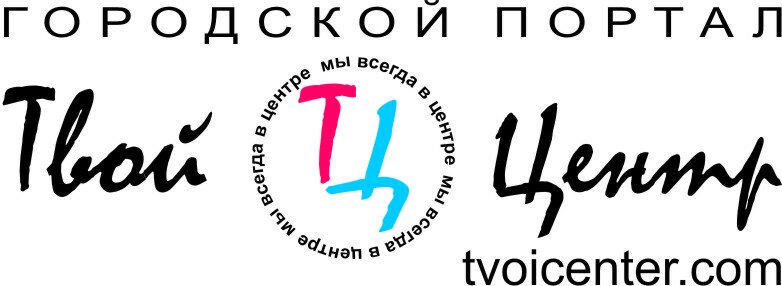Hank you The secrets behind a Facebook ad campaign with great ROI
Facebook ads are one of the best tricks businesses can leverage to get a strong online presence and a huge investment return. However, it is also one of the vehicles that needs well-thought-out planning and execution. Understanding the details that contribute to a great ROI can help advertisers make the most of their campaigns. Knowing how to get through the noise when there are millions and millions of businesses on the social network’s platform can also be a great advantage.

In this article, different methods and approaches to a successful Facebook ad campaign were considered. The most effective tactics include learning return on investment (ROI) metrics to evaluate the overall profit, creating converting ad creative, utilizing advanced targeting strategies, and optimizing budget allocation and bidding methods. Each section provides useful ideas and practices to help a business get a closer look at the money it spends on an advertisement and define the best ways to increase ROI value in a Facebook ad campaign.
Understanding Facebook Ad ROI Metrics
Key Performance Indicators (KPIs)
Key performance indicators are used to monitor a business’s strategic, financial, and operational accomplishments, particularly about competition within a specific sector. The most critical KPIs for Facebook ad monitoring, in turn, are CTR, conversion rate, CPC, and ROAS. The reason for this is that these metrics are capable of providing actionable information that will allow the business to measure how successful their ads are.
Calculating ROI for Facebook Ads
To calculate the return on investment, In this context, ROI is calculated as the total revenue minus the total costs, which is then divided by the total costs. This way, the calculation of the percentage of total costs that were returned by the campaign allows for an accurate understanding of its profitability. To correctly complete these calculations, though, it is necessary to first understand the difference between ROI and ROAS, which only divide revenues by the cost of advertising.
Setting realistic ROI goals
It depends on your business metrics right now, industry benchmarks, and what your goals are. For most of the ad campaigns, things like customer acquisition costs, average order value, and your history of conversion rates should give you a good idea of what your ROI is today. Once you know where you’re starting, it’s much easier to set realistic ROI goals and work from there on how to run your ads to hit that target.
Crafting high-converting ad creative
Compelling Visuals and Copy
The development of a high-converting ad creative starts with the synergy of compelling visuals and persuasive copy. First of all, ad copy should be targeted specifically toward the audience to guide it effortlessly toward fulfilling the aim of pressing through the ad. It is vital to ensure that the visual image matches the copy message to avoid conflicts between the visual and the verbal that can create clutter and distract the viewer. Generally, it is also recommended to keep both aspects in the same tone and style to ensure their mutual enhancement.
Utilizing Different Ad Formats
There are different Facebook ad formats to use to reach certain goals. For example, single-image instruments are more appropriate to use instead of carousels or video ads. They help to show several products, which is crucially important to involve the target audience. Video ads are also promising to be used instead of multi-product ads to demonstrate the functionality of certain products and services. However, today, it is up to Facebook users to decide what ads to use.
A/B Testing for Optimization
A/B testing is the way to complete the optimization of Facebook ads to increase the rates of conversions. In this way, different versions of ad creatives are tried, so the advertiser can identify what image, copy, and call-to-action work better for the audience. This method of optimization is beneficial due to the possibility to try different versions and refine the ad strategy, on the one hand, and its effects on the overall effectiveness of the ad campaign, on the other hand. It is easy to conduct A/B testing with Facebook tools like the Ads Manager toolbar to create many different versions of ads and compare them to select one that will be the most effective. You can find out the latest advertisement resources at Adstage. Here you will get the details of Facebook ads as well as AI tools to generate ads.
Advanced Targeting Strategies for Maximum ROI
Leveraging Custom Audiences
One of the most effective ways to target a selected group of individuals is by leveraging custom audiences. Social media platforms are a great tool for advertisers and marketers. To illustrate, if a website owner uses a Facebook pixel to track site visitors, they will be able to show Facebook ads to viewers who visited the particular pages on that website that are associated with the product or service advertised. In such a way, custom audiences will be created with a tailored approach to target those people who have previously interacted with certain websites.
Lookalike Audiences for Expansion
Using lookalike audiences helps you identify and reach new prospects who are similar to your best customers. When you have a custom audience that is performing well in the targeting strategy, lookalike audiences allow you to reach new individuals similar to your existing customers and who are likely to become customers as well. This ensures that you can identify potential clients, expanding your target market to increase your campaigns’ exposure. The targeting characteristic relies on the data available from the existing or best-performing custom audience.
Retargeting Techniques
Retargeting marketing techniques rely on individuals who have visited a brand or engaged with the brand in any way but did not complete an action. Retargeting ads on Facebook encourage these unique individuals to visit the site one more time and, in doing so, may take action. This form of marketing shows targeted ads to unique users depending on their prior behavior after the ads. These sets of customers are retargeting Carol Yl; site visitors are a must-do strategy as they are essential for converting them to clients by reminding them of what they viewed or left.
Budget Allocation and Bidding Strategies
Determining an optimal budget
A common decision regarding Facebook ads is how to set a budget: using a campaign budget versus ad-set budgets. Appropriately using task campaigns, the campaign budget can act as one fund shared among various ad sets, with the single approach being easy to use and potentially having lower costs associated with it, thereby enhancing the optimization rate. Nevertheless, the use of ad-set budgets responds to the need for highly accurate control over the spend per set, which might depend on differences in audience sizes or bid strategies. Moreover, the type of budget, either daily or lifetime, will affect the way Facebook’s algorithm places bids on behalf of the advertiser. If a daily budget is chosen, Facebook will slightly fluctuate spending per day around the average, while a lifetime budget will establish the maximum spent for the duration of the campaign.
Manual vs. automatic bidding
Manual bidding, or bid caps, could be defined as a maximum cost per acquisition that is set by an advertiser. This approach protects the company from spending over a certain budget but might also reduce the ads’ visibility. This strategy maximizes conversions in terms of the set limit. On the other hand, automatic bidding attempts to spend as much over the highest possible budget to achieve the biggest number of conversions, meaning that the conversion rate will be lower in this case.
Scaling successful campaigns
To make the Facebook ads work, the entrepreneur must not simply rely on a particular budget and its distribution to the target audience. Quite the opposite, they need to test their initial impressions to assess which approach is the most efficient and whether the expected results can truly be achieved. For this purpose, it is typically recommended to start with a minimum budget for the likely losses to remain manageable. As the data is collected, larger budgets can be used based on the experience that was accumulated at that time. In their strategy, the person can focus on the ads that are known to work and drive revenue.
Conclusion
The text under consideration entails the process of developing Facebook ad campaigns, which would be beneficial and focus on the maximization of ROI. The material provides comprehensive information on such aspects as the understanding of essential metrics and the value of both visuals and the content of an ad. Moreover, it demonstrates the significance of retargeting and the choice of budget.
This information could be identified as beneficial regarding the issues connected with the utilization of the Facebook platform for advertising. Moreover, the experience discussed and presented facts can be of help to new businesses and contribute to the development of their virtual stands. In such a way, the information provided in the text can assist in the formation of innovative ad campaigns, and the information on basic principles and strategies can ensure the efficiency of communication with the target audience and the achievement of ROI.
